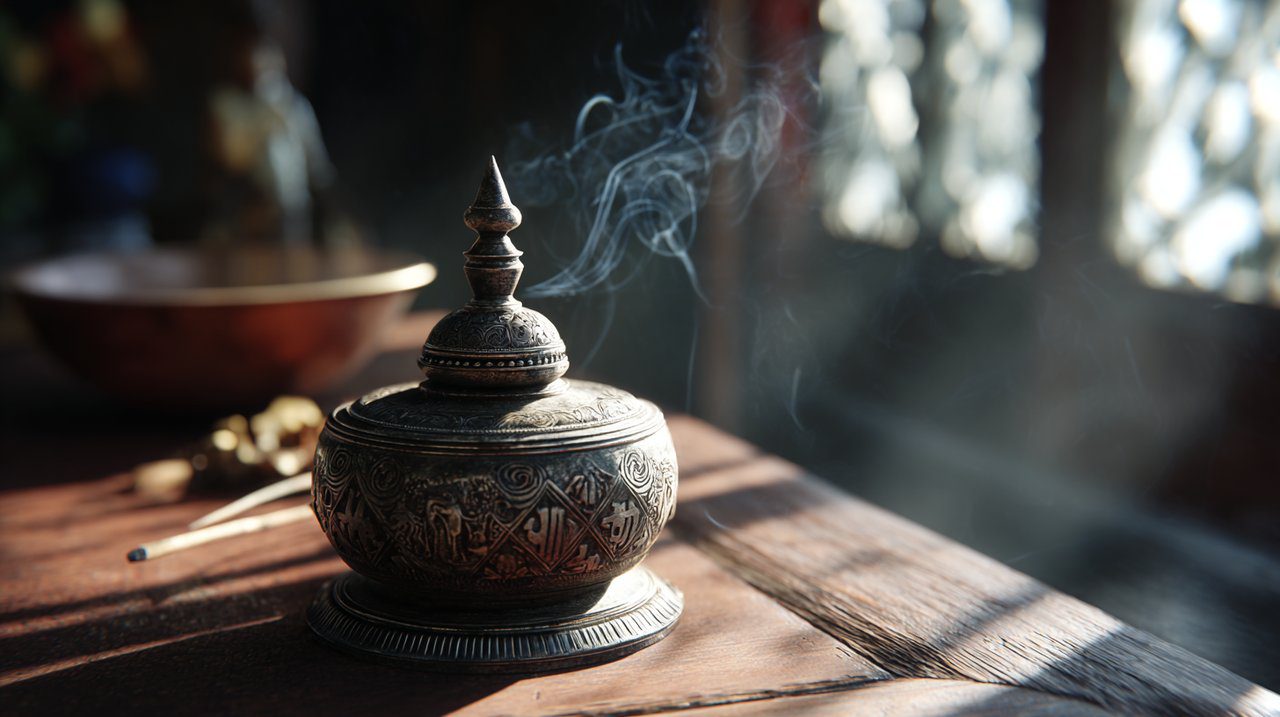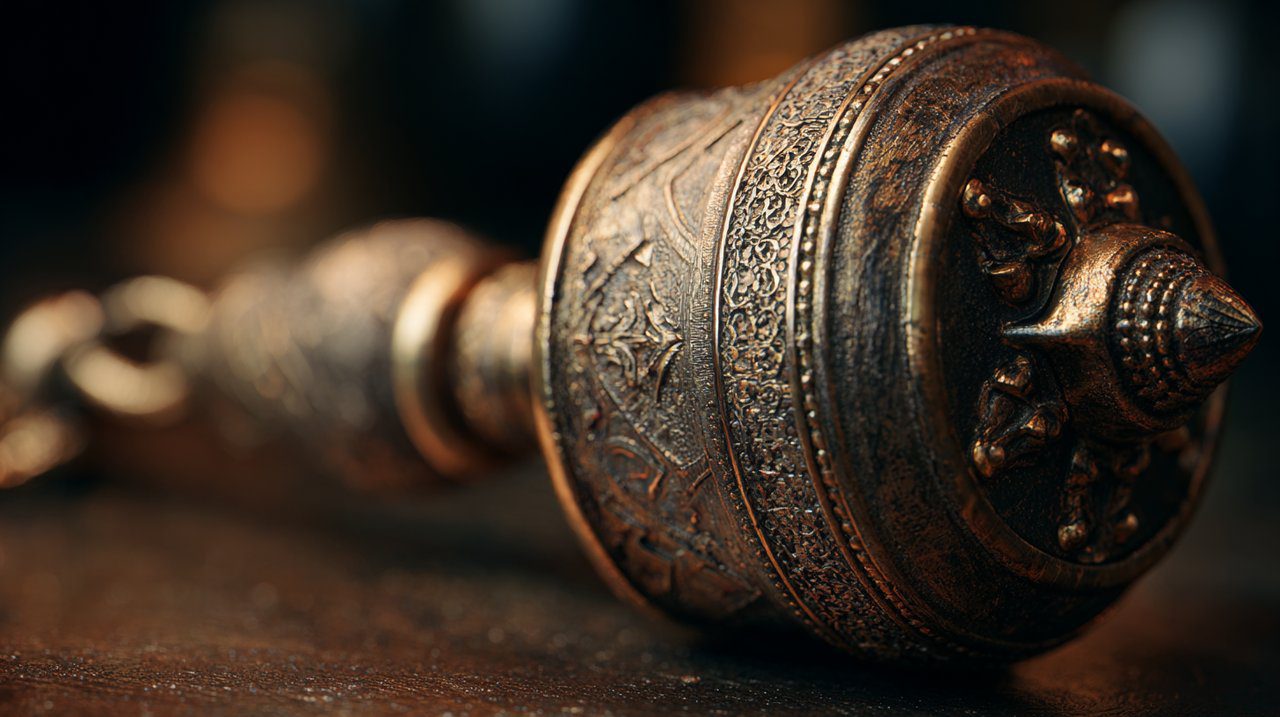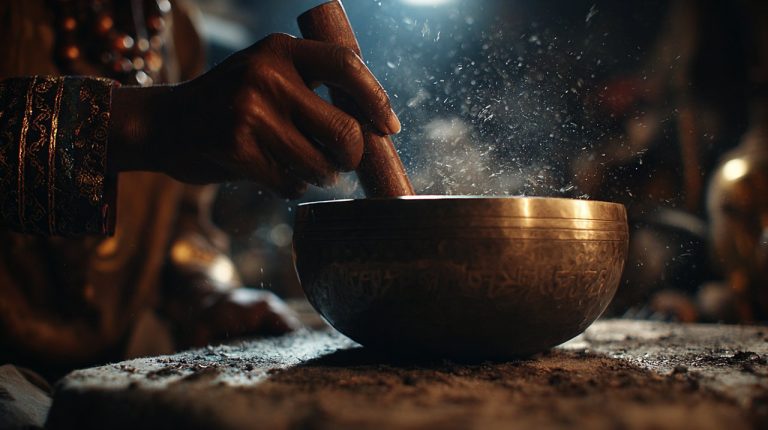Dorje Bell: Properties, Energy, and Spiritual Significance
My journey into understanding the dorje bell began not with an academic text, but with a profound, personal experience. In a secluded Himalayan monastery, surrounded by the scent of incense and centuries of spiritual practice, I witnessed a lama gently strike this ancient instrument. The sound was unlike anything I had ever encountered—pure, deeply resonant, and profoundly calming.
It was a moment that transcended mere aesthetics, igniting a desire within me to explore these sacred tools not just as historical artifacts, but as active conduits of spiritual energy. This experience underscored a core principle: true understanding often lies beyond the surface, in the deeper essence of things.

The Dorje Bell: Unpacking Its Sacred Origins and Components
At its core, the dorje bell—or ghanta in Sanskrit—is a fundamental pair of ritual implements in Tibetan Buddhism. It comprises two distinct parts: the dorje (also known as the vajra), a sceptre-like object, and the bell itself. While each component carries significant meaning independently, their true power and symbolism emerge when they are united in practice.
Components and Form: A Closer Look
The bell is typically crafted from a specific alloy, often a blend of five or nine metals, which gives it its signature clear and resonant tone. Its handle is intricately shaped like a dorje, visually emphasizing the inseparable nature of wisdom and compassion.
The bell’s hollow body symbolizes the emptiness (shunyata) of all phenomena—a profound concept in Buddhist philosophy suggesting that all things lack inherent, independent existence. The clapper, often depicting a tongue, represents the sound of the Dharma, the teachings of the Buddha, emanating from this very emptiness, awakening beings to truth.

Ancient Roots: From Ritual to Enlightenment
The origins of the dorje and bell can be traced back to ancient India, long before their central role in Tibetan Buddhist practices. They evolved from implements used in Vedic rituals, eventually becoming key symbols within Vajrayana Buddhism.
For practitioners, these tools are far more than mere accessories; they are considered embodiments of the enlightened mind. They are used to invoke deities, purify spaces, and facilitate deep meditative states. My own travels have revealed how meticulously these traditions are preserved, particularly in centers like the dorje ling buddhist center, where their lineage and profound usage are honored and passed down through generations.
Symbolism: The Perfect Union of Wisdom and Compassion
The true essence of the dorje bell lies in its rich, multi-layered symbolism. It represents the perfect union of seemingly opposite forces, guiding the practitioner towards a profound understanding of reality. This balance is not just theoretical; it’s a crucial pathway for anyone seeking deeper spiritual insight, a truth I’ve found myself returning to repeatedly on my own path.
The Union of Opposites: Skillful Means and Wisdom
The dorje symbolizes skillful means (upaya), which encompasses compassion, active engagement, and the indestructible nature of enlightenment. It is often likened to a diamond, cutting through delusion with unwavering clarity.
The bell, conversely, symbolizes wisdom (prajna), particularly the wisdom of emptiness. When held together—the dorje in the right hand and the bell in the left—they represent the union of wisdom and compassion. This union is considered an essential prerequisite for achieving Buddhahood.
It’s a powerful visual reminder that genuine spiritual awakening demands both profound insight and active, loving engagement with the world. This duality echoes the core principles that underpin Buddhist philosophy Buddhism’s Core Principles Explained.
Ritualistic Practice: Creating Sacred Space
During various Buddhist rituals, empowerments, and meditations, the dorje and bell are utilized with specific movements and gestures. These actions help to establish a sacred space, purify negative energies, and invite blessings.
For example, the ringing of the bell can signify the proclamation of the Dharma, awakening sentient beings from the slumber of ignorance. The precision and reverence with which lamas handle these instruments have always deeply impressed me, underscoring their profound role beyond mere sound production.
Resonance: Sound, Energy, and Meditation
Beyond their symbolic depth, the dorje bell possesses tangible qualities that can profoundly impact our spiritual practice. Its unique sound carries a vibrational energy, which I’ve come to recognize as a powerful tool for inner transformation.
Vibrational Healing: Harmonizing Inner Space
The distinct, sustained tone of a dorje bell is widely believed to purify the environment, clear stagnant energy, and harmonize the body’s subtle energy channels. I often use it before meditation to clear my mind and prepare the space, finding it creates a palpable shift in atmosphere.
The sound waves are thought to penetrate deep into our being, fostering relaxation and facilitating a deeper connection to our inner selves. It’s a gentle yet potent method for shifting one’s energetic state and inviting a sense of calm.
Personal Practice: Cultivating Focus and Peace
Incorporating the dorje bell into personal meditation can be incredibly transformative. I often begin by gently striking the bell, allowing its resonant tone to fill the space and quiet my thoughts. Holding the dorje in my right hand and the bell in my left, I focus on the profound union they represent—meditating on the balance of wisdom and compassion within my own being.
This practice grounds me, helping to cultivate focus and a sense of profound peace. This seemingly simple act can become a gateway to deeper states of awareness, reminding us that powerful tools don’t always have to be complex.
My Path with the Dorje Bell: A Personal Connection
A Fateful Encounter: Connecting with Lineage
I distinctly remember purchasing my first dorje bell from a small, family-run workshop in Kathmandu. The artisan, an elderly woman with incredibly kind eyes, shared stories of her ancestors who crafted these instruments, imbuing each one with blessings. This wasn’t merely a transaction; it was a profound connection to a lineage of craft and devotion.
Her commitment to creating tools that carried positive energy, coupled with her fair trade practices, deeply resonated with my own values. It served as a powerful reminder that authenticity and pure intention truly matter in the creation of sacred objects.
Everyday Connection: A Source of Inspiration
Today, my dorje bell rests on my meditation altar, serving as a constant reminder of the harmony between wisdom and compassion. While I don’t use it every day, its presence is a steady source of comfort and inspiration.
It reminds me that our spiritual journey isn’t always about grand revelations, but often about the subtle shifts, the quiet moments of connection, and the tools that help us tune into our own inner wisdom. It’s a testament to how even everyday objects, when imbued with intention and history, can become catalysts for profound growth.
Ultimately, we all possess the capacity to find our own resonance—our unique way to balance the active and contemplative aspects of our lives. Exploring the dorje bell has been a profound experience for me, illuminating the intricate beauty of ancient traditions and their enduring relevance in our modern world.
It exemplifies how physical objects, when infused with intention and history, can become powerful catalysts for spiritual growth. Perhaps, like me, you’ll find yourself drawn to exploring these sacred tools further, seeking out those crafted with genuine care and intention, and discovering their unique resonance within your own heart, much like choosing a personal spiritual symbol Buddhist Pendant Necklace Guide: Finding Your Spiritual Symbol.
💡 Frequently Asked Questions
A dorje bell, also known as a ghanta, is a fundamental ritual implement in Tibetan Buddhism. It consists of two distinct parts: the dorje (a sceptre-like object) and the bell itself, which are used together.
The dorje symbolizes skillful means, compassion, and the indestructible nature of enlightenment, while the bell symbolizes wisdom, especially the wisdom of emptiness. When held together, they signify the perfect union of wisdom and compassion, which is essential for achieving Buddhahood.
The origins of the dorje and bell can be traced back to ancient India, where they evolved from implements used in Vedic rituals before becoming key symbols in Vajrayana Buddhism.
The dorje bell is used in Buddhist rituals, empowerments, and meditations to create sacred space, purify negative energies, and invite blessings. Its unique, sustained tone is believed to purify the environment, clear stagnant energy, promote relaxation, and facilitate a deeper connection to one's inner self.







